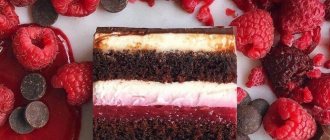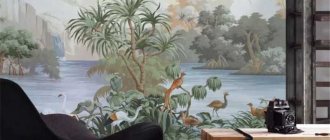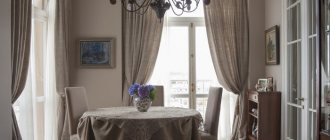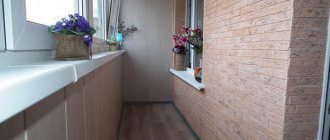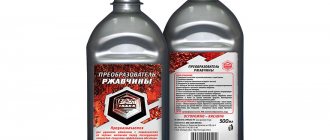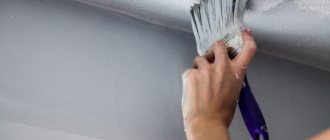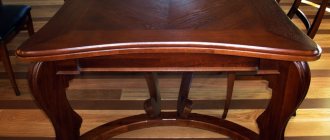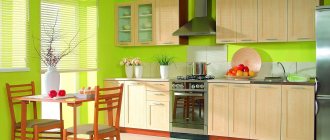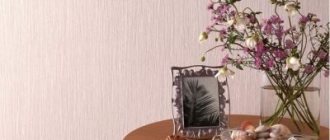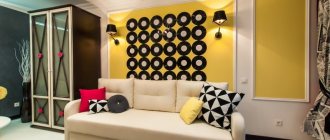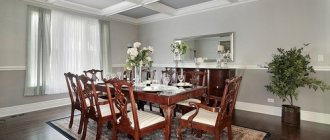In its original meaning, patina would refer to an oxide film on a copper piece that is green (malachite) or bluish (azurite).
Later, the same name began to be given to any kind of plaque that appears under the influence of time on the surface of wood or metal.
Nowadays, patina paint will mean the effect of aging, which is so fashionable when decorating furniture and kitchen utensils.
What effects can be obtained on metals?
Metal products are not so often found in residential premises, but still, without their presence it is impossible to create decorations. They can be chandeliers, lamps, candlesticks and candelabra. Of course, such products are attractive in appearance, but sometimes they would like to be given the effect of antiquity. This is possible if metal objects last for many years, but you want to achieve everything at once. To create a patinated base on metal, you cannot do without chemicals.
Patination of bases is divided into several types:
The antique effect on silver objects will look beautiful. Such metal surfaces are quite susceptible to ordinary sulfur, and different shades can be achieved: from faint yellow to bright turquoise. If chlorides or amino acids are exposed, the result is black, but the film is rough and noticeable. But if you simply blacken the silver, then you can say that you have arrived in past centuries.
Gold products practically do not react with any chemical reagents, but if the alloy based on this metal contains copper or nickel compounds, then over time the formation of orange or brown spots cannot be avoided.
In residential premises there are bronze items and a small number of copper items, and rarely just iron alloys. The appearance of a green film on a copper base occurs due to exposure to chlorides, and the black color is obtained by interaction with the oxide. Copper reacts quickly.
The bronze patinated surface is subject to destruction of molecules, and a green or blue coating forms on it. On such metals, the most noble patina that does not harm the base is a black tint. The latter option is obtained by patination of bronze using oil treatment, and copper shavings are used for calcination.
Advantages and disadvantages
The advantages of patination include the following:
- Wear resistance and long service life, since the patina coating creates additional protection not only from excess moisture and temperature changes, but also from abrasion;
- High practicality - there is no need for any special care, and dirt is less noticeable on such a coating, as are minor damages;
- Original and unique design - thanks to a combination of different compositions, dimensions, colors, decor of sets and various types of patination;
- Affordable price, which is much less than the cost of real antiques.
- In addition, a kitchen with any patina - gold, silver, black, white, colored - directly from the factory will cost less.
The disadvantages include the ability to ignite easily, so it is necessary to pay increased attention to electrical wiring and being near open flames.
What are the types of patination compositions?
In order to paint a product and give it an aged look, various paints are used, the constituent substances of which are:
- acrylic,
- stain,
- bitumen,
- wax,
- oil,
- shellac.
The choice of paint with the main constituent substance will depend on the effect that you want to achieve in the end.
Acrylic
It is water-based and is well suited for painting wooden, plaster or metal surfaces. It is able to protect wood well from getting wet. To create an original color pattern, paint of different shades is applied in several layers.
stain
It is a good protection against mold, mildew and moisture, so many surfaces are treated with it. It is used for patination if the desired result is a dark shade.
Bitumen
It is very convenient for applying patina to wood to obtain a subtle golden patina. If the surface has depressions, the bitumen coating will blacken them out. After drying, the product is treated with shellac.
Wax
It is used if you want to achieve a pearlescent shimmer, which will show all the surface reliefs in a favorable light. This paint is absolutely safe, so it is often used in the kitchen. It is easy to apply, so no special skills are required.
Oil
Such paints are used to cover and protect less resistant paints. If you want to give the product a rich color, then choose oil paints.
Shellac
It is more often used as a coating over other paints. It has a brown or yellow tint in soft tones. It is used as an independent paint if there is a need to preserve the basic color of the product and its structure.
Application in furniture production
The presence of a noble touch with color transitions is only welcome in the modern world. It effectively emphasizes the beauty of forging and carving on wood products
Such items always attract attention and move from ordinary to the category of rare and antique. Experts distinguish a group of decorative patina
The imitation is created using stain and paint of the required color. Sometimes shades completely unusual for the material are used for this.
If you take wood, then the plaque that appears is most often due to it being damaged by fungus or rot. But this does not happen with wood of high density and hardness, which is insensitive to moisture. For example, when processing oak furniture, white or dark patina is used, and this indicates the antiquity of the product.
In furniture production, an artificial method is often used, because a natural coating will not appear soon. For greater efficiency, masters use two methods:
- chemical;
- mechanical.
Patina of several compositions is used for application on wood:
- thick - its consistency is similar to a paste, most often two-component, with its help reddish, light brown and golden shades are obtained;
- liquid - it looks like varnish, this composition gives the wood a yellowish or golden tint, characteristic of ash or oak;
- beveled varnish - it gives the effect of antiquity after application and drying, the varnish becomes covered with the finest cracks, like on antique wood products.
Patina application method
Craftsmen often combine several methods at once to get the most original, interesting look.
The patination technology is simple and differs in the number of layers of composition applied. First, the product is cleaned, after which brushing is done. The surface of the wood is brushed with a wire brush to remove soft fibers, just like on an antique piece.
The next stage is treating the furniture with a white primer and sanding the surface. White color is great for gray and light tones. For contrast, a transparent primer is used. Then a layer of varnish is applied and the product dries. Now is the time to apply the patina composition. Excess is removed after a short drying. The composition must penetrate into the deep pores of the wood. The next step is to apply another layer of dark patina. Excess is also removed depending on the desired effect. The final point is to coat the product with transparent varnish.
Advantages and disadvantages
The main advantage of a facade with patina is its appearance. But besides this, there are several more positive features of this decoration option:
- wear resistance - it is ensured by the patination technology itself, during which a special mixture and several layers of varnish are applied to the facade. This way the headset becomes more protected from high humidity and temperature changes;
- practicality - the patinated facade only looks fragile and antique, but in fact it does not require special care, and the heterogeneous color of the decor can hide light dirt and even damage;
- durability - this point follows from the previous two. Since the coating is durable and practical, nothing will happen to it even after years;
- uniqueness - there are many colors for patination, which allows you to make the kitchen unique and add luxury to an ordinary set;
- affordability - real antique furniture is much more expensive than artificially aged furniture.
Patina also has disadvantages:
- easy flammability - it is worth taking a responsible approach to the placement of the headset and the reliability of the wiring; it should be additionally insulated;
- fragility to impact - on such a coating you should not cut food or pound meat without a board.
In addition to the decoration function, patination is often used for the restoration of antique furniture, which can be considered an additional advantage.
The photo shows a kitchen corner with ivory and gold facades.
Types of patina for wood
Initially, patina meant a layer of oxide or salts that forms on the surface of a metal over time. Later, that natural coating on old wood - oak, beech, which is formed due to the gradual chipping of soft wood fibers and filling the pores with wax or oil - depending on what product was used during care, also fell into the same category.
This effect is obtained just at home, since it is created with your own hands, but for a very long time. And it is clear that you can get a natural touch of antiquity only on solid wood, but not on MDF or chipboard.
However, if you resort to a home master class, you can do this artificially, and much faster. Special compounds and special techniques are used for this.
Patination of furniture involves the use of the following compositions:
Bituminous patina - bitumen varnish is applied to the wood surface with your own hands, and the excess is wiped off with white alcohol. Bitumen, absorbed into the pores or deeper details of the relief, creates the impression of long-term use. The resulting patina is always dark in color. The effect is properly secured with shellac varnish.
Water-based acrylic patina is the easiest to use and ideal for home use. Acrylic paint is applied with a brush or sponge to the surface or highlighting individual details of the carving, and then shaded. The color range of paint is not limited: silver patina on a blue or black background, gold on a dark oak background, silver patina on an ivory background, and so on. Any master class claims that any desired shade on a furniture surface can be achieved by painting the wood several times and with different paints.
Acrylic paint goes well with other decoration methods: painting facades, decoupage, varnishing, and so on. Suitable for wood - oak, birch, and metal - copper, brass.
- Shellac varnish is a resin solution based on ethyl alcohol. The composition gives the furniture shades from golden to transparent red, depending on the number of layers. Apply the varnish with a brush or sponge yourself. Shellac varnish is ideal for decoupage and is especially effective when painting facades with silver and gold acrylic paints: the varnish gives them the muted shine of an old product.
- Wax patina - it can be used not only to create the effect of antiquity, but also to reveal the structure of wood and toning. The wax composition hardens slowly, which makes it convenient for DIY work. Wax patina is most suitable for processing carved patterns, so it is recommended to use it on small wooden products made of oak and ash, and not furniture.
The wax mixture is often used to imitate a metal surface - gold, silver, and also on wood. At the same time, the structure of the wood is preserved, which creates an unusual effect.
Oil patina is similar to wax patina, but is more versatile: it can be used on both metal and wood. Suitable for application with a dry brush, sponge, or can be used as a base for craquelure. It is not advisable to use it with decoupage - the oil does not combine with napkins for decoupage.
What interior style should you choose for a kitchen with patina?
Since a touch of antiquity makes the furniture look antique, this solution will not fit into every type of design. For example, patination is not suitable for furniture in modern styles: techno, hi-tech, modern. This technique looks best when decorating a kitchen in such directions as classic, country, Provence, vintage, shabby chic and antique style.
Classic
The main qualities inherent in classics are aristocracy and elegance, which can be significantly enhanced by the use of patina on kitchen furniture. The noble touch of antiquity here will either be a self-sufficient decoration, or will be successfully combined with carved details and interesting patterns.
The top cabinets under the ceiling look the most beautiful. Combined cabinets are no less suitable for the classic style: they alternate solid facades with glass parts and lattice sections. If there is a lot of decor, fittings, and decorations, it is better to make the patina more restrained in color. A modest kitchen will be decorated with patination with gold and silver.
Provence
In this style direction, aged elements and details darkened by time are also welcome. Matte bases, dark patina on a light background, and interesting accessories are especially suitable for Provence. Most often, crackle technology is used here, giving the surface the appearance of cracked paint.
Patina technology
Those who have ever worked with patina know how easy it is to do. There are no difficulties when processing wood. Moreover, this process is so exciting that it brings pleasure.
But every home craftsman needs to know that when working with different types of surfaces, their own special algorithm is used. This is the main condition that guarantees a decorative patina.
Surface preparation. Before you begin creating a patina on your woodwork with your own hands, you should examine the surface to make sure it is suitable for the job. Products made from untreated solid wood are ideal for these purposes, since they do not require additional processing.
It’s a different matter if you have to deal with smooth varnished surfaces, coatings created using acrylic film or PVC. The paint will not stick to them. The defect can be corrected by brushing. To do this, you need to treat the surface with coarse sandpaper or a wire brush.
So, we will remove the soft wood fibers located under the film, which is unstable to such influences. Once the structure is exposed, it is ready for further processing. Now you need to use a soft brush to clean the surface from dust and degrease it.
Classic patination
Despite the fact that the technology for applying coloring compositions based on bitumen, wax or acrylic is quite simple, it must be carried out exactly according to the accepted algorithm:
- The work begins with applying a dye to the surface. We determine its quantity depending on the intensity of the result we want to get. Paint can only lie on the surface of the product or penetrate into the thickness of the relief.
- If this becomes necessary, remove excess solution with a rag.
- To create a deeper patination effect, wait for the first layer to dry. After that, apply the next one and shade it.
- When the finishing coat of paint dries, take a fine piece of sandpaper and rub the area. After completing the steps, we should get an aged, noble surface.
- At the final stage, the treated surface must be coated with alkaline varnish.
Despite all the attractiveness of modern interior items and furniture, there are still people who especially appreciate furniture with an antique effect. But these don't have to be antiques.
A noble surface can be obtained using modern materials. But here you need to take into account that each of the painting materials has its own characteristics, so before work you need to study the technology of their application and strictly adhere to it.
What is patina and what features need to be taken into account when decorating?
The word “patina” comes from the Italian “patina”, which originally meant a coating on copper.
The green film has a second name - “verdigris”. Other metals are also subject to patination: iron rusts, silver turns black. Today, patina in interior design refers to artificially aged objects - furniture, accessories, finishing details, decor.
The antiquity effect can be:
- Natural. Exactly what we talked about in the first paragraph - greening of copper, rust.
- Artificial. Man-made to highlight the sophistication of its details.
According to the material they are distinguished:
- Metal. In a kitchen with patina, this could be aged handles, pipes, or faucets.
- Wooden. The effect can be craquelure - when white or any other color with a cracking effect is applied to the entire surface. Or partial - in this case, the protruding elements are aged or, conversely, the recesses are made darker.
The photo shows gold contour patination of kitchen cabinets
How to quickly make a patina on furniture step by step instructions
Finishing furniture elements with light surfaces with gold leaf will be a worthy decoration, but the main thing is not to overdo it in the amount of gold decor.
Gold leaf goes well with the dark surface of furniture, for example, when it acts as noble abrasions.
The following step-by-step instructions with photographs will tell you how to make a patina on furniture quickly and easily:
On the face-covered surface of the ends of the stool, as described above, apply a gold leaf with lining paper, previously cut into small longitudinal pieces. After waiting for the glued gold leaf to dry completely (the drying time is recommended by the glue manufacturer), walk over the surface with medium or fine-grained sandpaper.
Rub the surface across the grain or in a circular motion until you achieve the desired abraded effect.
The end parts are subject to abrasion when using the stool, so be sure to cover them with a protective layer of gold leaf varnish.
Applying patina to wood with your own hands
Do-it-yourself patination of wood begins with preparing the surface, and only after that the coloring composition is applied
It is important to follow safety precautions when working. Work must be carried out outdoors using protective equipment
Preparatory stage
First of all, it is necessary to remove traces of old varnish and paint from the slab being treated with a wire brush or sandpaper. Laminate furniture is brushed using sandpaper.
After this, restoration is carried out. Using a special putty, deep damage is repaired, dried, and sanded again with sandpaper.
Then you need to apply a wood primer to the furniture and leave it to dry for 10 hours. To prepare the laminated coating, a special adhesive insulator is first used, and then a colorless polyurethane primer is used.
Using stain
The stain application process is simple. First, soft wood fibers are removed from the furniture being treated with a wire brush. Then, manually (with a brush, roller or sponge) or using a spray bottle, cover it twice with stain of the selected shade.
You can achieve more uniform coloring with the help of a conditioner, which will fill all the unevenness on the surface of the material. It is applied every 20 minutes until the composition stops being absorbed. Then wait 30 minutes and apply stain.
Classic way
Patina is applied to wood using the following method:
- Apply a base layer of acrylic paint of the desired shade to the slab. You can apply the composition evenly or in rough strokes. Leave to dry for 24 hours.
- Using sandpaper, carefully rub three layers of paint in some places for an aging effect, and polish with a rag.
- Apply another layer of acrylic paint. It can be a different shade or with a metallic sheen. Shade it, rub it again with sandpaper and dry it.
- Cover the product with a layer of matte acrylic varnish and leave for 6 hours until completely dry.
What do you do with old furniture? Poll Options are limited because JavaScript is disabled in your browser.
Craquelure technique
As a result of using the craquelure technique, furniture is covered with a web of small cracks. The simplest technology for patination of a headset using this method is using beveled varnish. This is a water-based composition, which cracks during the drying process with a craquelure effect.
The more layers of coating you apply, the more cracks there will be on the treated surface. Faceted varnish can be transparent or colored. The composition can be applied to untreated or painted boards.
There is another technology for patination of furniture, craquelure. First, the set is coated with acrylic paint, then with craquelure varnish and matte water-based paint. The finishing layer should be thin so as not to spoil the texture. Apply the brush once so that the varnish does not roll off.
Two-phase technology for patination of furniture with a craquelure effect looks like this. Apply shellac varnish in 2-3 layers, drying each layer thoroughly. Then we apply craquelure varnish, let it dry, rub the cracks with bitumen wax and cover them with shellac again.
Patination of wood
Patina was originally called a greenish-brown coating that appeared on bronze, copper, and wooden products after some time had passed. Now an artificial method has emerged for aging any objects made from various materials, especially wood. When applying paint, the relief and texture of the product is emphasized, since dark paint penetrates into the recesses, and light paint remains on the protruding parts.
Click to go to the desired section Patinated wood
- Surface treatment;
- Patination or application of varnish in dark shades;
- Rubbing the patina solution onto the surface;
- Fixing the effect with varnish.
Patination is done using a special paint, which often contains particles of bronze, silver and gold. This coating lasts much longer than natural plaque. In addition, the paint additionally protects the wood from destruction. Paint on almost any traditional base can be used for patination. The color of the paint can be either golden, silver, or red, purple, blue and other bright colors. Patination is carried out on solid wood, lamellas and MDF.
To create artificial antiquity, quite a few types of patination compounds are used: stain, acrylic, bitumen, shellac, wax, oil. This produces different shades with individual effects.
It could be:
- individual coverage;
- partial improvement;
- craquelure effect.
The consistency of the composition can also be different; it can be a thick paste, which allows you to give the wood golden or red shades. To give a glow effect and give the wood noble shades, liquid patina (with a synthetic or water-based base) is used. For a deep antique effect with a craquelure effect, beveled varnish is used. When applied, the surface becomes covered with cracks.
Patination of wood
Patination of wood at home:
Proper patination of wooden surfaces begins with brushing. Soft wood fibers are removed with a stiff brush, while hard longitudinal fibers remain intact. A dark stain is used for patination.
Acrylic for patination is almost universal and can be used not only on wood, but also on plaster and metal. Acrylic patina has silver, gold, blue and other equally beautiful colors.
Patination can be carried out on the entire surface of the product or only on its individual carved protruding part.
When applying different shades of the compositions, a deeper and more complex color is obtained. For a subtle coating or, conversely, a rich golden hue, bitumen varnish is used. All the recesses in the wood become black, and the edges begin to protrude outward.
This varnish consists of bitumen polymer, white spirit or turpentine. After drying, the surface should be covered with shellac varnish. To create a pearlescent shimmer, a wax-based composition is used.
This type of patina can be used for wooden products that will be placed in damp conditions, as they are protected from moisture by a wax layer.
Shellac is a paint-varnish of yellow, red-brown colors. The main color and structure are preserved. Shellac can be used either alone or as a top layer. The oil composition is similar to shellac and saturates the wood with natural color. To apply a patina surface, the surface is brushed using a metal brush or coarse sandpaper. Use a soft brush to remove dust. The surface is degreased. Chipboard, MDF are pre-primed.
Patination of wood at home
Shellac varnish is applied on top. To create the effect of an old oak surface, stain is used. Water stain is applied to the brushed surface. To highlight the relief, remove excess paint with a sponge.
A white spirit-based fixing compound is applied on top.
To remove the texture, wax is applied to the surface with the stain applied. Everything is fixed on top with shellac. A more expensive finish is craquelure. It uses patina and beveled varnish. First, bevel varnish is applied in two layers; when it dries, you can begin patination.
When using any patination composition, one must not forget about accuracy
You need to work carefully and carefully, this will allow you to create a beautiful aged item that will decorate any home. . Author of the article
Author of the article
Material
Facades can be made from either natural wood or MDF. The former are considered to be of higher quality and more durable, while the latter are considered budget-friendly. Recently, combined facades have become popular: their frame is made of solid wood, and the insert is made of MDF or glass.
Array
A kitchen made of pine is one of the most budget-friendly options when it comes to natural wood. The downside is that this is a soft wood - dents may appear on it already when installing the headset, which means that such a facade is less practical and durable.
The most prized hardwoods are oak and ash . They have two advantages:
- they are resistant to moisture, which makes them perfect for the kitchen;
- they can naturally develop a patina without destroying the internal structure.
It is often important for housewives to emphasize the hardwood and its texture. wax-based patina is used . It allows you not only to age the wood, but also, if desired, to tint it.
This mixture is quite easy to apply and takes a long time to harden, so a beginner can do it with his own hands.
- Ash is a light wood. A golden or yellow patina looks best on it, but there are silver, pistachio and other options. The main thing is to ensure the compatibility of such decor with the rest of the kitchen.
- Pine and walnut have a very beautiful wood texture, which is usually emphasized by patination with a white composition. White will highlight all the veins of the material, “adding” several years to it.
- Oak is a noble tree. Most often it is patinated with black shades to add luxury and chic to the furniture. We are, of course, talking about natural color. When tinting, you can afford almost any decision about the color of the mixture.
MDF
There are two types of MDF: veneered and PVC. Inside such a facade there are compressed and glued wood chips, but they differ in appearance.
- If you need to get a veneered MDF facade, then a thin layer of wood is glued onto the compressed shavings.
- If a cheaper option is needed, then a PVC film is applied to the shavings.
Among MDF facades with PVC film, it is best to choose options with a slight, barely noticeable texture - the patina will look best on them.
Popular colors include oak, ash or their white counterparts. Applying patina to PVC film is much more difficult than to veneer or solid wood, and the result will not always be worth it, so if you get involved in this adventure, then entrust it only to a professional.
A kitchen made of veneered MDF is an average cost option. It is difficult to distinguish it from solid wood, but in terms of the variety of finishes, MDF is in no way inferior to it - both painting and tinting are possible. Patination of veneer is practically no different from solid wood, since it is the same wood, only a thinner layer.
Most often, MDF kitchens have different color options, which means there is an opportunity to experiment with the color of the patina.
